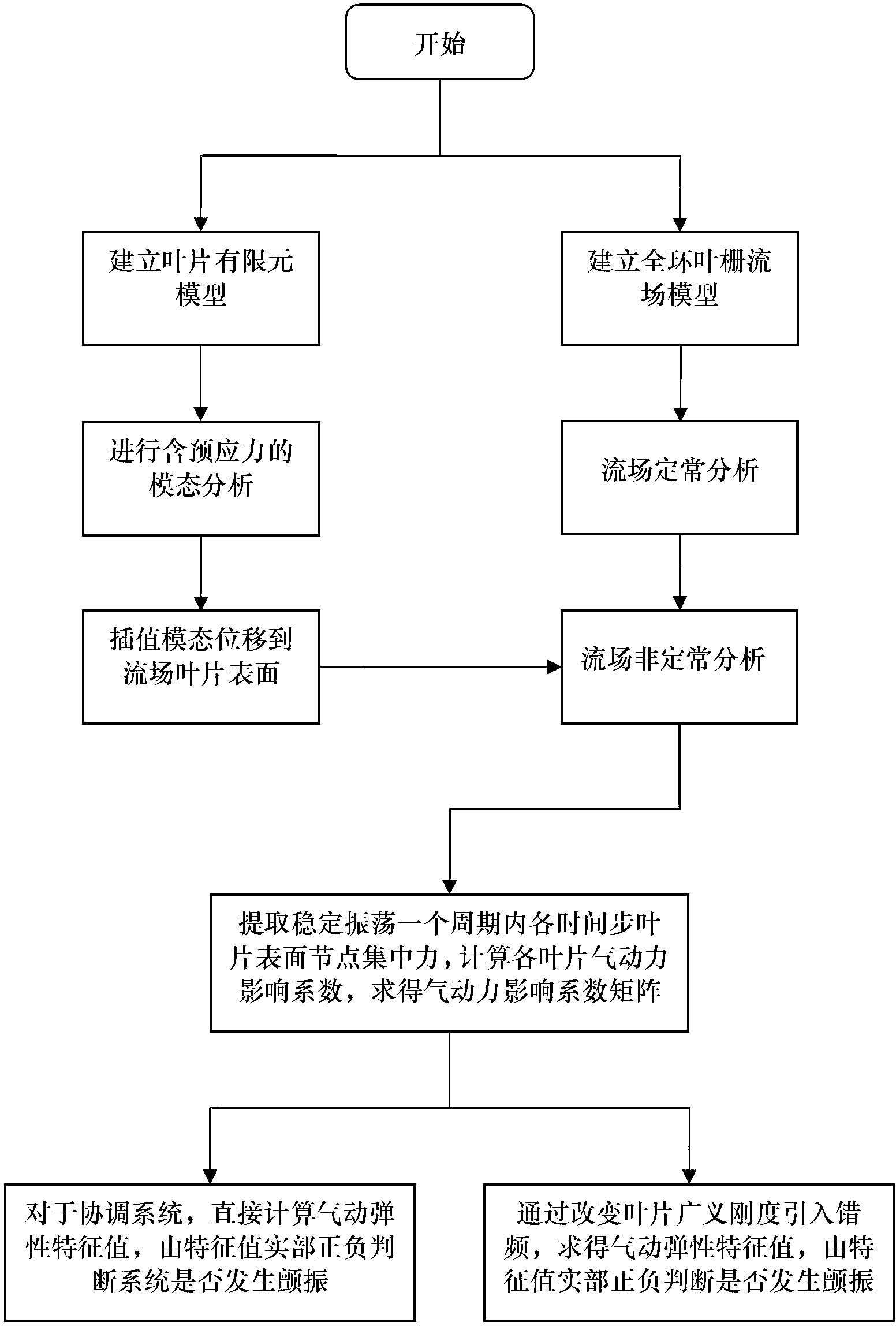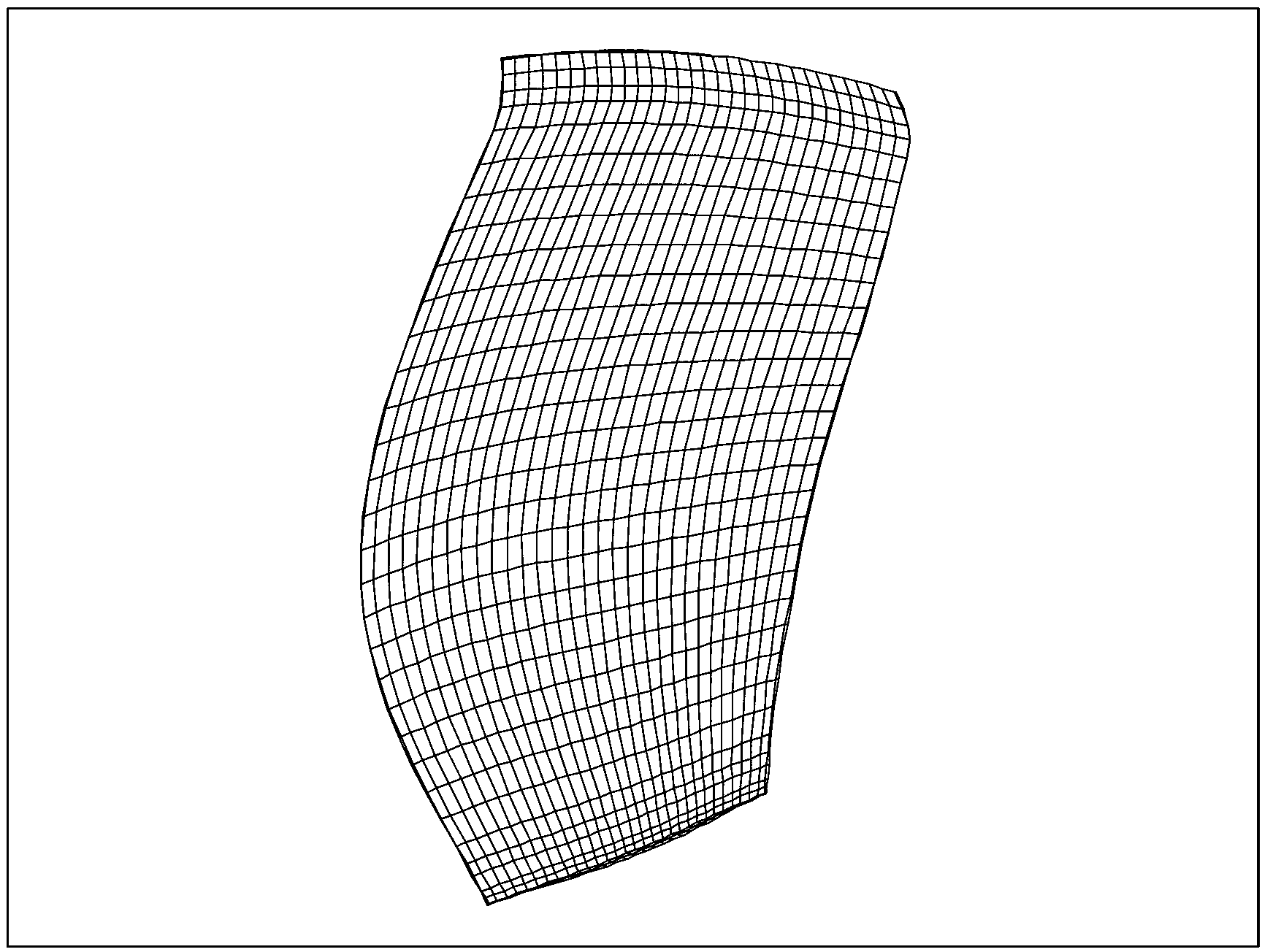Method for predicting aeroelasticity stability numerical value of turbomachinery with error frequency included
A technology of aeroelasticity and numerical prediction, applied in calculation, electrical digital data processing, special data processing applications, etc., can solve problems such as predicting the aeroelastic stability of turbomachinery blades, and achieve the effect of saving calculation amount
- Summary
- Abstract
- Description
- Claims
- Application Information
AI Technical Summary
Problems solved by technology
Method used
Image
Examples
Embodiment Construction
[0058] In the present invention, a method for numerical prediction of aeroelastic stability of impeller machinery including frequency error, the specific steps are as follows:
[0059] Step 1: Establish a finite element model of the blade;
[0060] Establish a blade finite element model in the CAE pre-processing software for a given solid model;
[0061] Step 2: Perform modal analysis with prestress on the established finite element model;
[0062] Firstly, the established finite element model is imported into the finite element software ANSYS, the corresponding material parameters are defined, and the rotational speed and displacement constraints are given, and the prestress caused by centrifugal force is obtained through static analysis;
[0063] Then, using mass-normalized modal analysis and taking into account the prestress caused by centrifugal force, the natural vibration characteristics of the blade are obtained, and the natural frequency and mode shape of the blade vi...
PUM
 Login to View More
Login to View More Abstract
Description
Claims
Application Information
 Login to View More
Login to View More - Generate Ideas
- Intellectual Property
- Life Sciences
- Materials
- Tech Scout
- Unparalleled Data Quality
- Higher Quality Content
- 60% Fewer Hallucinations
Browse by: Latest US Patents, China's latest patents, Technical Efficacy Thesaurus, Application Domain, Technology Topic, Popular Technical Reports.
© 2025 PatSnap. All rights reserved.Legal|Privacy policy|Modern Slavery Act Transparency Statement|Sitemap|About US| Contact US: help@patsnap.com



